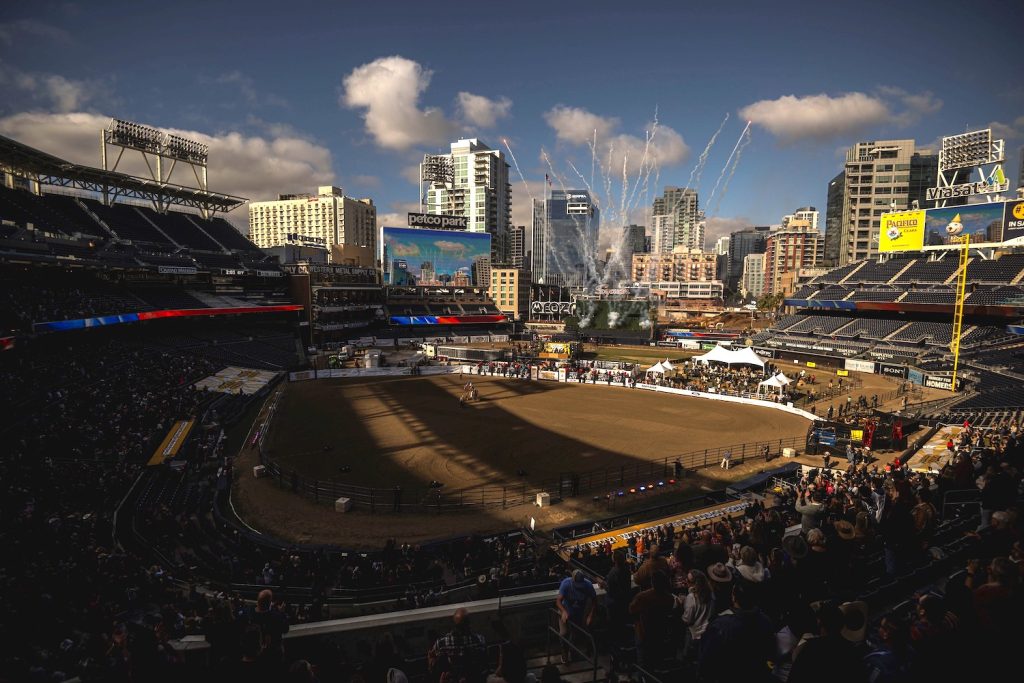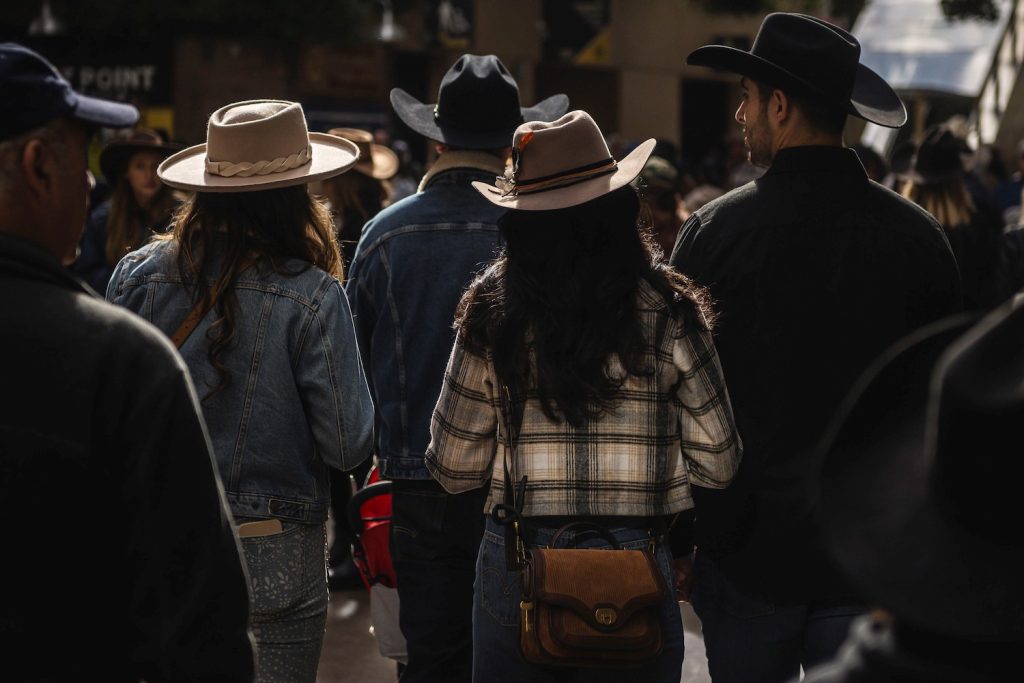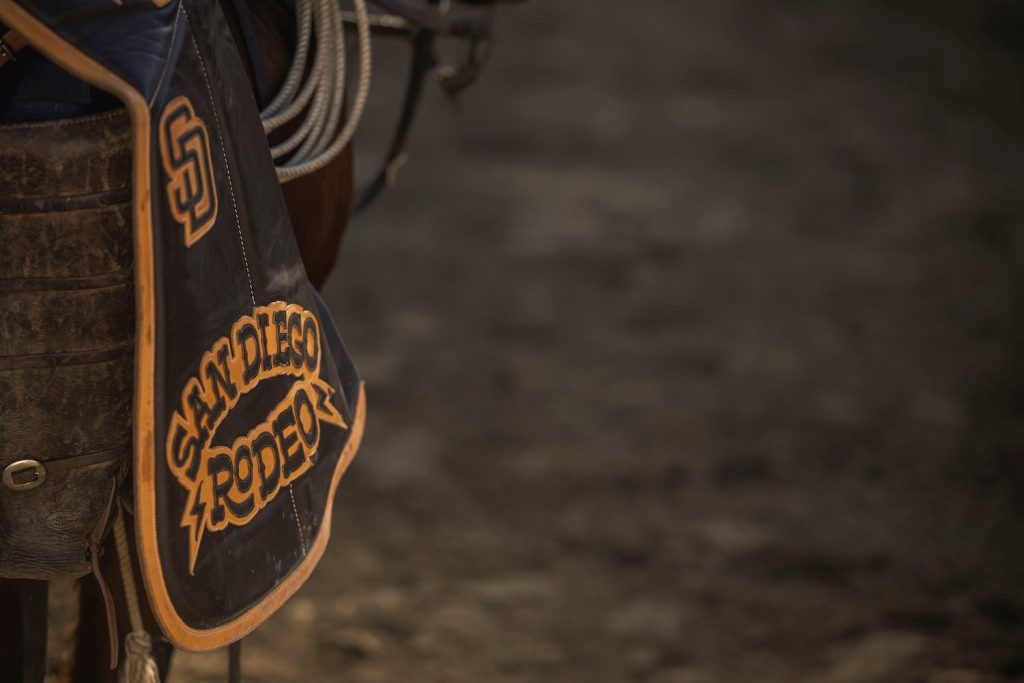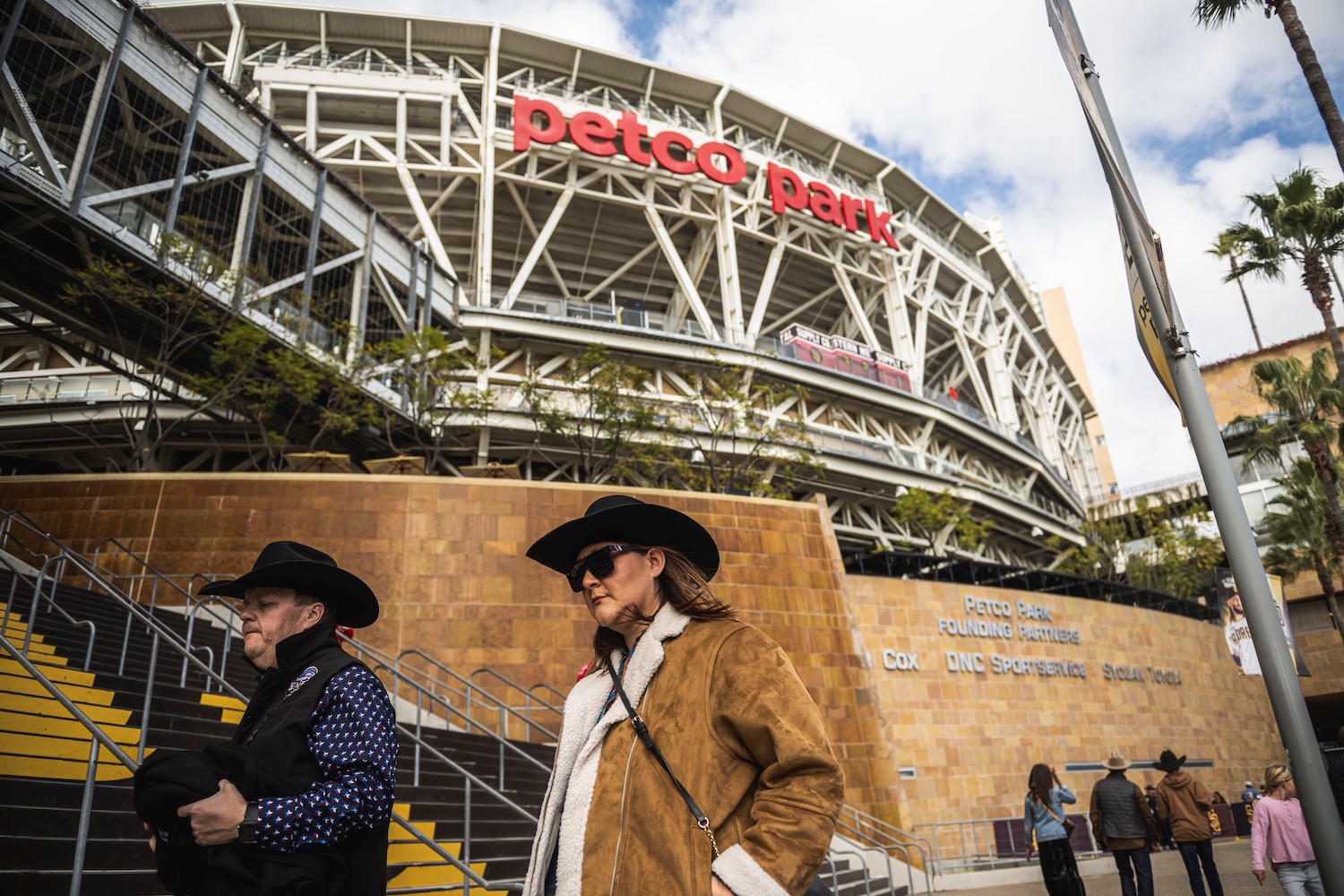The East Village is a sea of cowboy hats and denim on Sunday, as spectators make their way to Petco Park for the third and final day of the San Diego Rodeo. The streets are teeming with pick-up trucks and the energy is high. For the stadium, this is in fact its first rodeo—and the first one to take place within San Diego city limits since the 1980s.
Inside the stadium, a face-painted rodeo clown launches merch from a t-shirt gun into the cheering stands. The jumbotron displays a “line dance cam” instead of a kiss cam, to the delight of the onlookers. The day’s competitions include steer wrestling, team roping, bareback riding, and more—all of which are extremely brief.
In breakaway roping, some contestants rope their calf in under two seconds. Blink and you might miss it. The bull and bronc riders are judged on their eight-second performances, if they can last that long. Barrel racing clocks in as one of the longer events, where a horse and rider run a cloverleaf pattern around three obstacles. Fan favorite and 68-year-old Sue Smith wows the crowd with a 14.89 second time.
But not everyone is excited for the festivities. Along Park Boulevard, a dozen or so protesters hold handmade signs that read “Rodeos Hurt Animals” and “Real Men Are Kind.” A woman with spikey blonde hair and a scarf that says “Vegan AF” confronts the line of ticket-holders. She asks over a loudspeaker why they want to watch “animals abused by a bunch of wannabe cowboys.”

This passionate activist is Ellen Ericksen, a spokesperson for the protest who has been out here all weekend. She describes the rodeo as antiquated, “like we’re in Roman gladiator times.” She feels that it’s her duty to advocate for the voiceless. “I don’t know how people can witness an event like this and not be outraged,” she says.
Ericksen works closely with the Animal Protection and Rescue League and SHARK (Showing Animals Respect and Kindness), the two local organizations that sued the Padres and C5 Rodeo over noncompliance with municipal codes in November in an attempt to prevent the rodeo from coming to San Diego. The plaintiffs claimed that the presence of animals within the stadium violated city code, since downtown is not zoned for livestock. The judge ultimately ruled in favor of the rodeo on the basis that the codes are intended for public space, and the event takes place on private property.
While Ericksen is disappointed in the outcome of the trial, she doesn’t seem surprised. “It’s all about the money,” she tells me.
There are four other rodeos in San Diego County this year (in Lakeside, Poway, Valley Center, and Ramona), and Ericksen plans to protest all of them. She believes that change starts small—“one person at a time,” she says. “Because that rippling effect will go on, whether it’s here, or at the racetrack, or at SeaWorld, or any event where animals are exploited. All you need is one more person to open their eyes.”

Code violations or not, it is remarkable to see Petco Park’s baseball diamond transformed into a rodeo arena. San Diego’s skyline seems incongruent with the scene below, where a cowgirl gallops across the dirt field on a buckskin, holding aloft a flag advertising Boot Barn. Even the competitors haven’t seen anything like it: after winning first place in the Saddle Bronc finals, Zeke Thurston says, “This is probably the coolest arena I’ve ever rode a bronc in.”
Sunday’s competitions take place without major incident, unlike the opening night on Friday, when a racehorse bucked its rider, ran headfirst into a fence, and collapsed during a race—a difficult scene to watch, and fuel for the pre-existing controversy. (The horse is now recovering.)
The next day, I reach out to Tyson Cardinal, ranch manager and flank man for C5 Rodeo. His family has been tending livestock for generations; his grandfather taught him how to care for animals. He calls me from the ranch in Lac La Biche, Canada, where the bucking horses are raised. The rodeo athletes get injured more often than the livestock during these events, he says.
But when the animals do get hurt, he takes it seriously. They are treated with chiropractic work, magna waves, and massage therapy. “If people just saw my chiropractor bills,” he adds, laughing.

He says the animals are bred for these sports, so it comes naturally to them. “These bucking horses, if they didn’t want to do it, I promise you they wouldn’t go in the truck,” he tells me. “I know my best horse, Virgil, he will be pawing at the gate to get in that trailer. It’s what they love to do.” It’s negative 40 degrees in Lac La Biche, and he is out checking on the livestock while he talks to me.
PARTNER CONTENT
“I wish these activists had an open mind. I wish they could just come and hang out with me for one month to see what I do, and how these animals are treated,” Cardinal continues. “I could prove to them a whole different world than what they think, I can promise you that.”
By now, both protestors and cowboys have cleared out of Petco Park, and soon the stadium will be returned to its familiar state. As for the fate of the San Diego Rodeo, that remains to be seen.

















